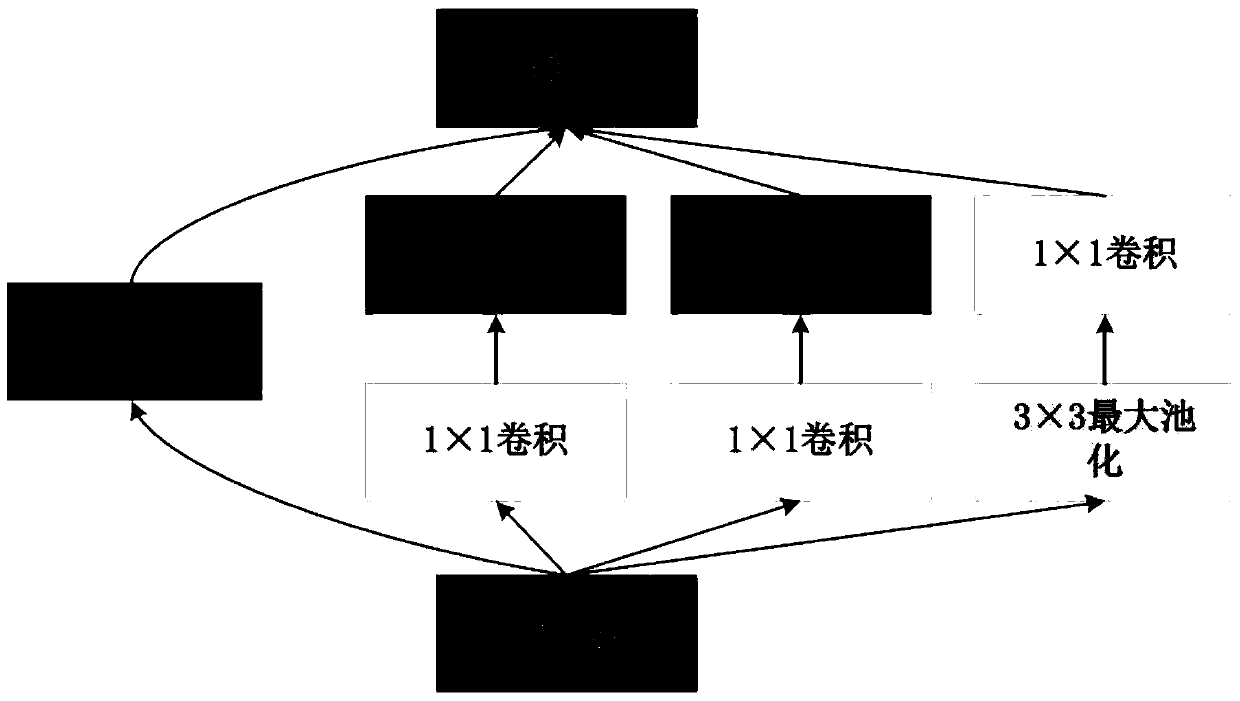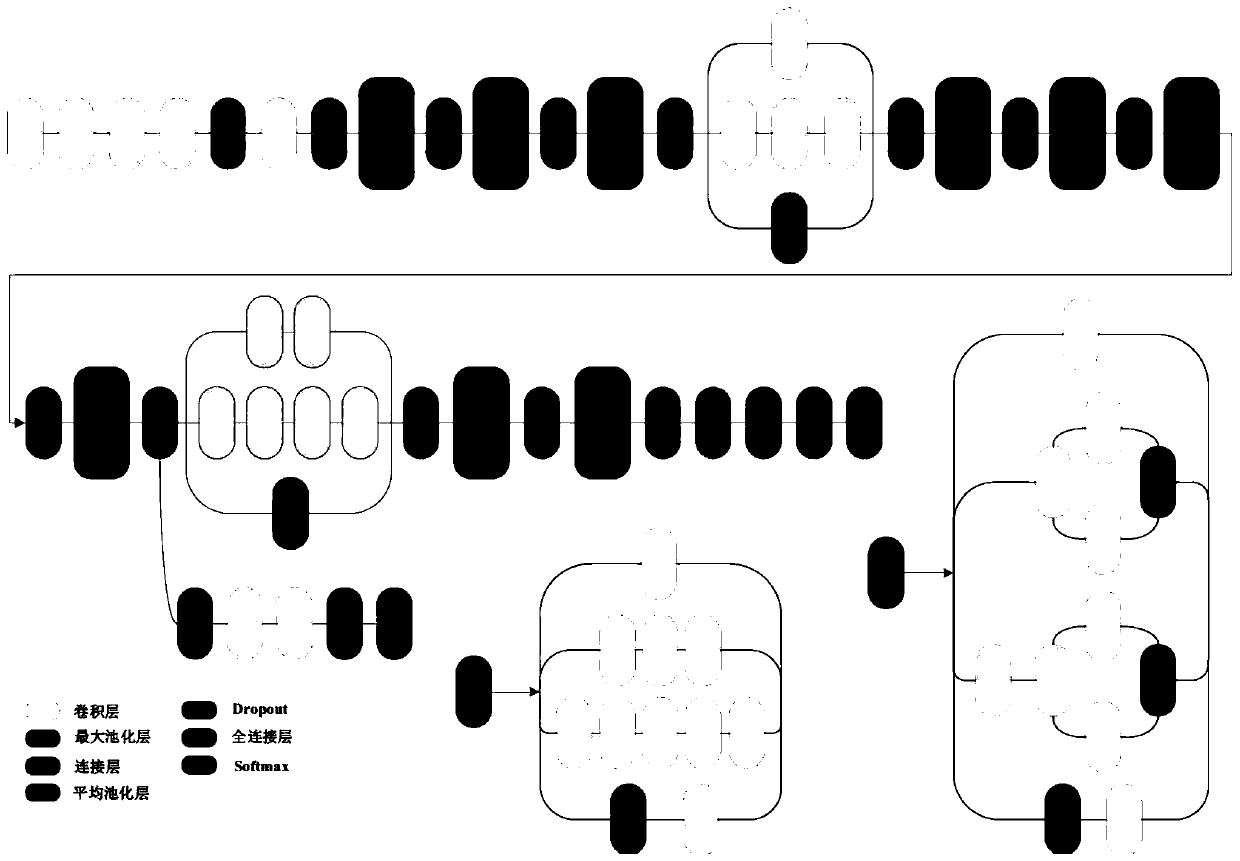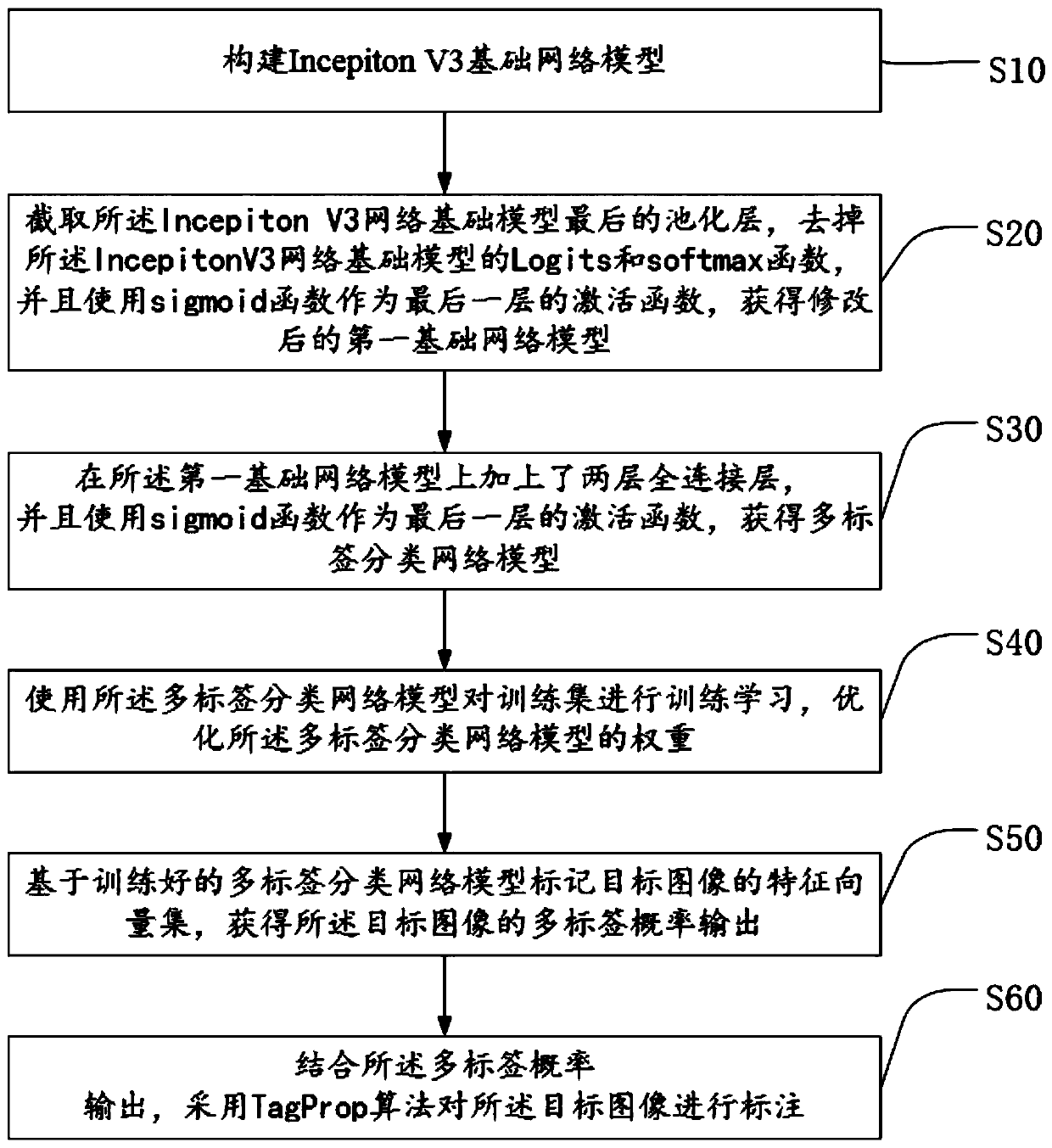Image labeling method based on convolutional neural network and binary coding features
A convolutional neural network and binary coding technology, applied in the field of visual images, can solve the problem that a single label cannot fully describe the image, and achieve the effect of low cost, high speed and high efficiency
- Summary
- Abstract
- Description
- Claims
- Application Information
AI Technical Summary
Problems solved by technology
Method used
Image
Examples
Embodiment Construction
[0034] The present invention will be further described below in conjunction with the accompanying drawings and specific embodiments, so that those skilled in the art can better understand the present invention and implement it, but the examples given are not intended to limit the present invention.
[0035] The present invention uses Inception V3 as the basic network structure of the model. The characteristic of the Inception network is that while controlling the calculation amount and parameter amount, it also obtains very good classification performance. The Inception network does not blindly increase the number of layers of the network. It proposes the Inception Module, whose structure is as follows figure 1 Shown is a schematic diagram of the Inception network model. This modular design reduces the number of parameters of the network and shrinks the design space of the network while increasing the thickness of the network. The Inception network model also introduces the i...
PUM
 Login to View More
Login to View More Abstract
Description
Claims
Application Information
 Login to View More
Login to View More - R&D
- Intellectual Property
- Life Sciences
- Materials
- Tech Scout
- Unparalleled Data Quality
- Higher Quality Content
- 60% Fewer Hallucinations
Browse by: Latest US Patents, China's latest patents, Technical Efficacy Thesaurus, Application Domain, Technology Topic, Popular Technical Reports.
© 2025 PatSnap. All rights reserved.Legal|Privacy policy|Modern Slavery Act Transparency Statement|Sitemap|About US| Contact US: help@patsnap.com



